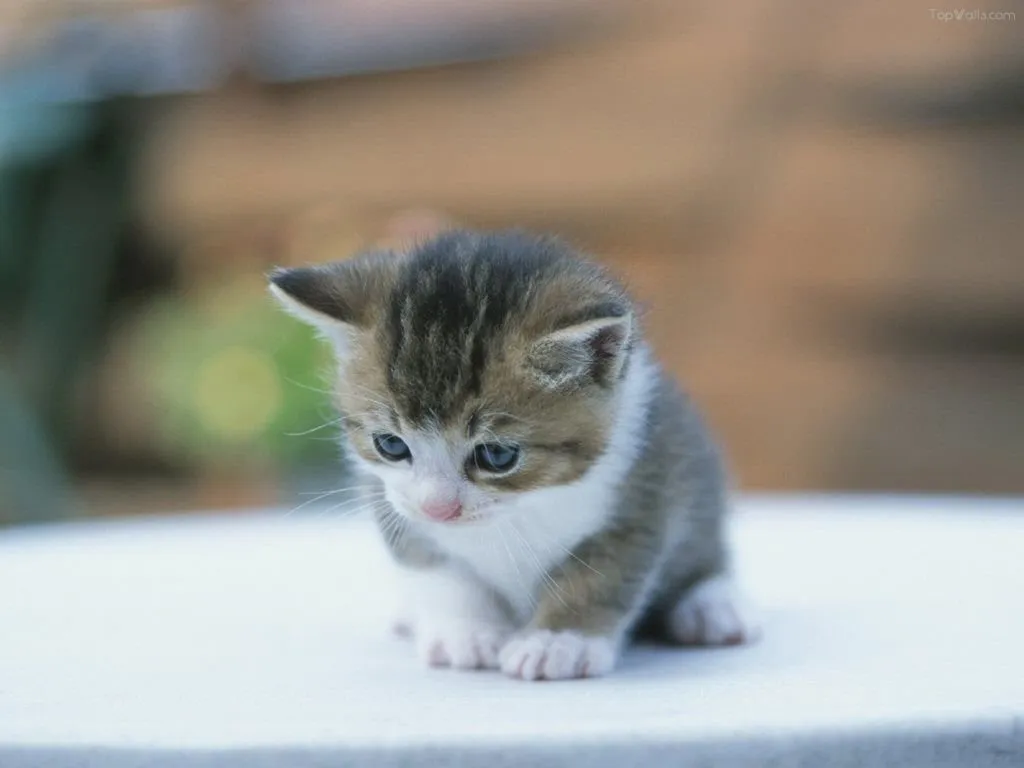
(this is just a picture of an ordinary cat, not a picture of a sand dune cat, I don't have a dune cat and don't have a picture of a dune cat, for pictures of a dune cat you can search on google)
The sand dune cat (scientific name: Felis margarita): is one of the smallest cats, generally weighing between 2.8-3.5 kg. The legs are short, the head is big, and the ears are big. Its fur is soft and dense, its body color is close to the color of sand, and its legs are striped with black bands. Like most desert carnivores, sand cats have thick pads on the soles of their feet, and they have thick fur, which is perfect for blocking hot surfaces.
This species rests under rocks during the day and hunts at night. Eats mice, lizards and insects. Dune cats get the water they need from their prey. It only gathers during mating and is distributed in northern Africa, central Arabia and southwest Asia.
Morphological characteristics
Sand dune cats have a length of about 45-57 cm, a tail length of 28-35 cm, and a weight between 1.5-3.5 kg. The sand cat's skull is very wide and the eyes are quite large (it looks like they have black eyeliner circles), and dark lines fly to the corners of the eyes on each cheek, the nosebone is longer and the nose is pointed. relatively large This not only makes them sensitive to smell, it is said that they also help lock in water and have a large pair of ears Apart from having a pair of large ears, the sand cat's inner ears are also highly developed, which is perfect for them to pick up on small sounds in the desert. sand. The legs are short, the pads on the soles of the feet are very thick, and the paws and pads are covered with long hairs up to two centimeters, which is suitable for blocking hot soil. The body color is mostly light sandy yellow or light gray, the back is slightly darker, and the belly is whiter, there are some horizontal black stripes or spots on the back and outside the limbs. Sometimes it's basically invisible. This is most clearly seen in the African subspecies. The tail of the hump cat is longer, more than half its body length, with dark stripes around the tail, and the tip of the tail is black. The long hairs on the soles of the feet prevent the skin from being scalded by hot sand. It can survive temperatures ranging from 5 to 52 . Their hair was not long, but very thick, and its thick fur kept the desert chill at night.
Habitat
The distribution area of the dune cat is divided into 5 parts, namely the southern Arabian Peninsula, the arid Sahara Desert in North Africa, the area around the Caspian Sea in Russia, and southern Pakistan. Dune cats live in vast, barren deserts and mountains, and they are well adapted to the environment there. Extreme temperatures in the desert can reach a maximum of 58 degrees Celsius and a minimum of minus 13 degrees Celsius. And a severe water shortage.
life habits
Dune cats are nocturnal, hiding under rocks during the day to rest. Go hunting at night. A pair of large ears can help them stay calm and hear little noise from a distance. They prey on gerbils, sand rats, rabbits, spiders, reptiles, birds, insects, and snakes. Sandbark cats sometimes bury their food in the sand and wait to enjoy it when it is short on food. They get most of the water their bodies need from food, and their urinary system also urinates as little as possible, so sandbar cats can stay out of the water for extended periods of time.
Dune cats are not good at climbing and jumping, but they are very good at digging holes. The dune cat is a solitary animal and a solitary predator. Sometimes males help females raise their young. During hot days, the humpback cat generally moves less, hunting at night, and burrowing into dungeons at dawn. Each dune cat has an area of about 16 square kilometers, and the territories of male dune cats sometimes overlap one another. Dune cat calls are similar to domestic cats, hissing, imitating, etc
How to breed
Sand dune cats enter the breeding season in March and April each year. Most Saharan cats are born from January to April, Turkmenistan in April, and Pakistani in September and October. The period of estrus can be as long as 46 days. The gestation period is about 2 months, each time will give birth to 1-5 kittens, at most can give birth to 8 kittens, birth weight between 39 to 80 grams, within 3 weeks after birth, 10 grams per day Body weight, after 5 weeks , they begin to learn to dig for food from the ground, can live independently at the age of 3-4 months, sexual maturity 14 months, and a life span of 13 years.
Population status
The natural enemies of the humpback cat are venomous snakes, birds of prey, wild dogs, etc., but the main threat comes from humans. Their feathers are traded in illegal markets, and they may be caught when they sneak attack birds. In Muslim areas, Dune Cats are protected as companions of Muhammad. The sand dune cat lives in the desert, so its habitat has not been seriously attacked. Dune cats are protected by law in Algeria, Iran, Israel, Kazakhstan, Mauritania, Niger, Pakistan, and Tunisia, but they are allowed to be hunted in Egypt, Mali, Morocco, Oman, Saudi Arabia, United Arab Emirates, and other countries. The sandbar cat in Pakistan became extinct in 1940.